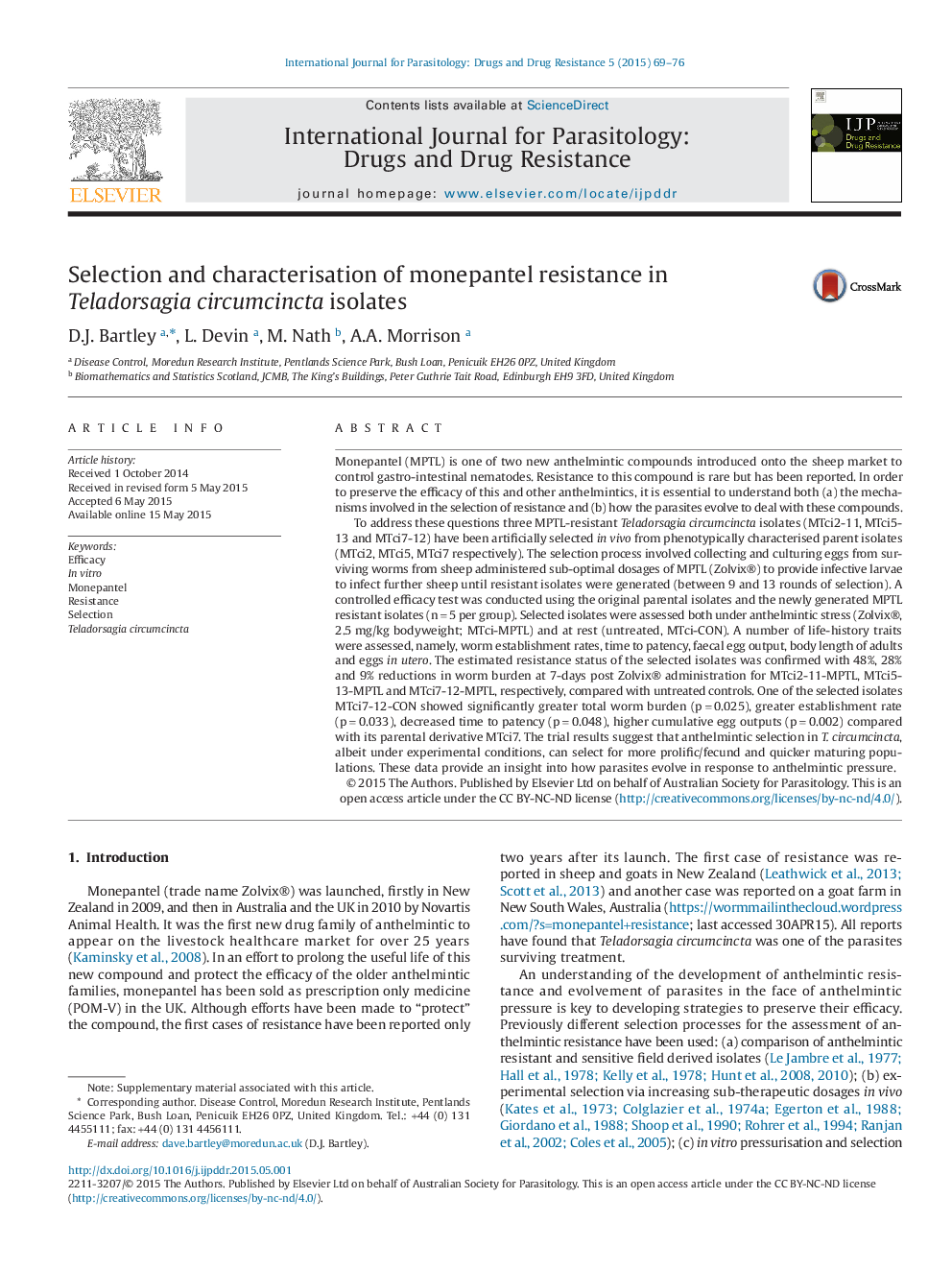| Article ID | Journal | Published Year | Pages | File Type |
|---|---|---|---|---|
| 2054598 | International Journal for Parasitology: Drugs and Drug Resistance | 2015 | 8 Pages |
•Monepantel resistance was selected in three isolates of Teladorsagia circumcincta.•Selection for resistance was generated through rounds of sub-optimal dosing.•Selection for monepantel resistance occurred within 9–13 generations.•Selection for resistance impacted on the life history traits of the isolates.•Increased egg output and shortened time to patency was seen in a resistant isolate.
Monepantel (MPTL) is one of two new anthelmintic compounds introduced onto the sheep market to control gastro-intestinal nematodes. Resistance to this compound is rare but has been reported. In order to preserve the efficacy of this and other anthelmintics, it is essential to understand both (a) the mechanisms involved in the selection of resistance and (b) how the parasites evolve to deal with these compounds.To address these questions three MPTL-resistant Teladorsagia circumcincta isolates (MTci2-11, MTci5-13 and MTci7-12) have been artificially selected in vivo from phenotypically characterised parent isolates (MTci2, MTci5, MTci7 respectively). The selection process involved collecting and culturing eggs from surviving worms from sheep administered sub-optimal dosages of MPTL (Zolvix®) to provide infective larvae to infect further sheep until resistant isolates were generated (between 9 and 13 rounds of selection). A controlled efficacy test was conducted using the original parental isolates and the newly generated MPTL resistant isolates (n = 5 per group). Selected isolates were assessed both under anthelmintic stress (Zolvix®, 2.5 mg/kg bodyweight; MTci-MPTL) and at rest (untreated, MTci-CON). A number of life-history traits were assessed, namely, worm establishment rates, time to patency, faecal egg output, body length of adults and eggs in utero. The estimated resistance status of the selected isolates was confirmed with 48%, 28% and 9% reductions in worm burden at 7-days post Zolvix® administration for MTci2-11-MPTL, MTci5-13-MPTL and MTci7-12-MPTL, respectively, compared with untreated controls. One of the selected isolates MTci7-12-CON showed significantly greater total worm burden (p = 0.025), greater establishment rate (p = 0.033), decreased time to patency (p = 0.048), higher cumulative egg outputs (p = 0.002) compared with its parental derivative MTci7. The trial results suggest that anthelmintic selection in T. circumcincta, albeit under experimental conditions, can select for more prolific/fecund and quicker maturing populations. These data provide an insight into how parasites evolve in response to anthelmintic pressure.
Graphical AbstractFigure optionsDownload full-size imageDownload as PowerPoint slide
